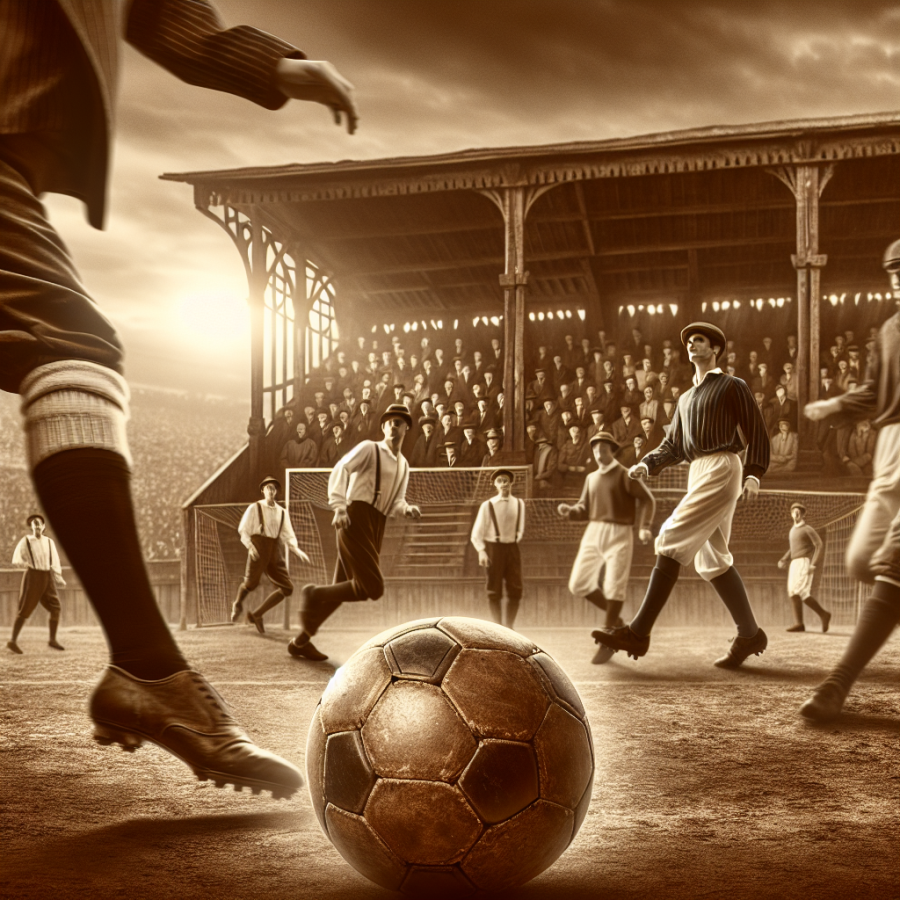The Ancient Beginnings: Unearthing the Early Antecedents of Football
The game of football as we know it today has gone through numerous transformations. Digging into the timeline of soccer, one can trace back its existence to hundreds of years before Christ was born. Amid controversies, debates, and discrepancies over football's origin, there is still a remarkable global unanimity, recognizing several patterns of ball games played manually in ancient times as the facsimile of modern football.
Many observers contend that the inception of soccer can be traced back to China's ancient society. Historical records dating around the second and third centuries B.C. in China mention a game known as 'Cuju' played with a leather ball filled with feathers and hair. It's said the ball was kicked into a net, and only using the feet was permissible. In many ways, this resembled an early form of soccer without physical contact allowed, a notable distinction from what we know football to be today.
Meanwhile, some cultural and historical scholars argue that the Greeks and Romans played games that involved kicking and throwing a ball. In Greece, the game adopted the name “Episkyros,” where player tossed the ball among them using their feet, revived in the Roman sport “Harpastum”. But the games were more violent and physical than the Chinese game–less of football and more of rugby, as they allowed players to run with the balls in their hands, emulating more familiar features with Rugby.
On the other hand, records from pre-Medieval cultures depict football-like games, conspicuously played in Japan, Egypt, Persia, and some parts of Central America. The native populations used balls made of rock, cloth, or rubber. In most cases, these games revolved around communal gatherings, celebrated as fertility rituals, training for warfare, or even as a form of entertainment for the royalty.
Mesoamerican societies also had a ritualistic sport, a blend of ball court game and football. Here, teams competed to pass a solid rubber ball through stoned rings using only their hips, shoulders, and head. It is, however, challenging to draw a direct line of inheritance from these violent rituals to football, and the discrepancy muddles up its history further.
Further into the Middle Ages in Britain, a violent and chaotic version of football, dubbed 'Mob football', emerged. This adaptation had virtually no rules, an unfathomable number of players, and often resulted in injuries.
Read also:
Breaking it Down: The Average Duration to Golf 18 Holes
The Evolution of Soccer: From Medieval Villages to Modern Stadiums
Soccer, known as football to most of the world, has traveled a long way from dusty medieval village squares to the gleaming, multi-million dollar stadiums we see today. Its evolution gives us a unique glance into human history and cultural shifts around the globe.
The earliest roots of soccer can be traced back to ancient civilizations. In China, a game called Cuju, that involved kicking a leather ball through a small hole in a silk cloth, was popular during the Han dynasty. Similarly, the Greeks played a game known as Episkyros, and the Romans enjoyed a similar sport called Harpastum.
The form of soccer closer to what we know today took shape in the trenches of medieval villages. During the middle ages in England, entire towns would participate in boisterous and often violent matches that stretched from one end of a village to the other. These somewhat chaotic games played a crucial role in cementing the social fabric of the community.
Significant steps towards modern soccer were taken in the 19th century. The year 1848 saw the creation of the Cambridge Rules, which laid down regulations for the game for the first time. These rules, discussed and decided upon at Cambridge University, provided a framework that controlled the chaos typifying earlier forms of soccer.
Perhaps the most critical step in the evolution of soccer was the formation of the Football Association (FA) in England in 1863. The FA established a standardized set of rules known as the Laws of the Game, a number of which are still in place today. This action played a massive role in transforming soccer into a formal and organized sport.
Following the standardization of rules, soccer began its journey into professionalization. The first soccer league, the English Football League, was created in 1888. This encouraged the construction of proper stadiums and fields for matches. Enclosed stadiums provided spectators with a more immersive experience, and on-field markings made the game easier to follow.
The world's first purpose-built football stadium, Bramall Lane in Sheffield, England, set a new standard for match venues. The trend of constructing dedicated football stadiums continued into the 20th century, with architectural wonders such as the Estadio Centenario in Uruguay, built for the inaugural FIFA World Cup in 1930.
In the 21st century, soccer's evolution continues. Modern stadiums are architectural marvels equipped with state-of-the-art technologies providing fans with unforgettable experiences.




